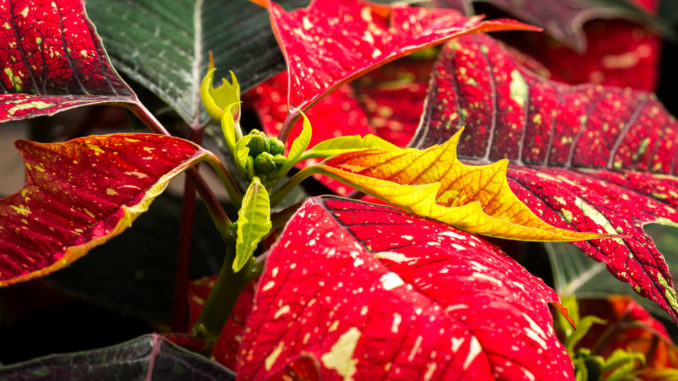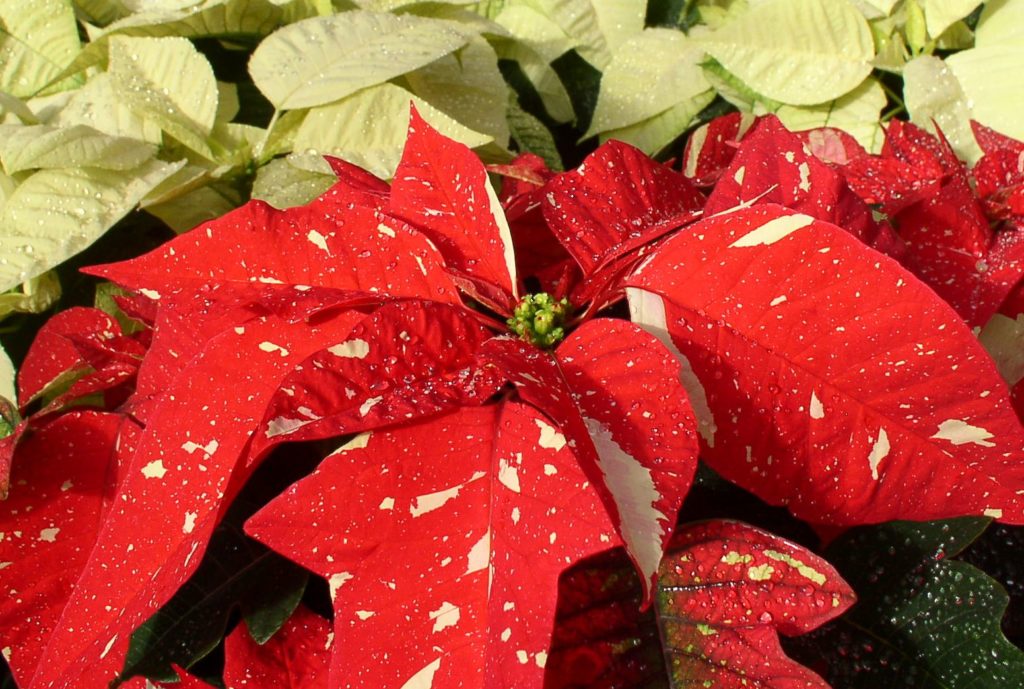
Kelly Kellow, Horticulturist, Gardens on Spring Creek
The tale of the poinsettia spans hundreds of years with countless twists and turns winding its way into our holiday norm.
In the 17th century, there was a legend of a young girl named Pepita who was traveling to her village nativity. She did not have money to buy a present for baby Jesus at the service, so she gathered a bundle of roadside weeds and formed them into a bouquet. Upon entering the chapel and presenting her bouquet of weeds, they miraculously turned into a bouquet of beautiful red flowers that we today call poinsettias. The folklore continued for 200 years and remained a tradition in small villages of Mexico.
On a trip to Mexico in 1828, Joel Poinsett was walking through the valleys of Taxco in southern Mexico, where he was mesmerized by a plant with beautiful red flowers. Not being able to part from the plant he took cuttings back to his home in South Carolina, where he owned a greenhouse. Having a love of botany, Joel Poinsett began to study and cultivate the plant. During the holidays when the leaves are at their most vibrant red, he would give his plants to friends as gifts.
The word about these beautiful plants with a magnificent red color spread through towns on the east coast of the United States, and soon became a popular gift during the holidays. In 1836, the plant was formally named Poinsettia after the man who brought the plant to America, creating the treasured holiday tradition.

Today, Paul Ecke and his greenhouse company have created a wide range of more than 100 varieties of poinsettias. They vary in color including bright pink, white, copper, speckled white, and red. Newer varieties even feature ruffled leaves, with more varieties introduced every year.
In the wild, poinsettias or Euphorbia pulcherrima are deciduous flowering shrubs that grow up to 10 feet tall, thriving in USDA Hardiness Zones 9 – 11. What appears to be flower petals are actually colored bracts (modified leaves) that surround a central cluster of yellow flowers. Intolerant to the cold, poinsettias are exclusively grown in greenhouses and sold as houseplants.
With the right care, poinsettias can be more than just a holiday plant – you can keep them year-round with these basic steps. After the holidays, and when the temperatures are at least 60 degrees Fahrenheit, you can keep the poinsettia in a pot outside in a partial shade area. In order to get the plant to turn color again for the holidays, you will want to start a 12-hour darkness period at the beginning of October. Using a cardboard box, place the plant in it for 12 hours of the day, such as 5:00 pm. to 8:00 am. Then, during the day keep the plant in lots of light. Make sure to keep the soil evenly moist with a fertilizing schedule of every other week with a general-purpose fertilizer.
Poinsettias are a beautiful tradition and can be enjoyed in the home for months after the holidays.
Support Northern Colorado Journalism
Show your support for North Forty News by helping us produce more content. It's a kind and simple gesture that will help us continue to bring more content to you.
BONUS - Donors get a link in their receipt to sign up for our once-per-week instant text messaging alert. Get your e-copy of North Forty News the moment it is released!
Click to Donate
